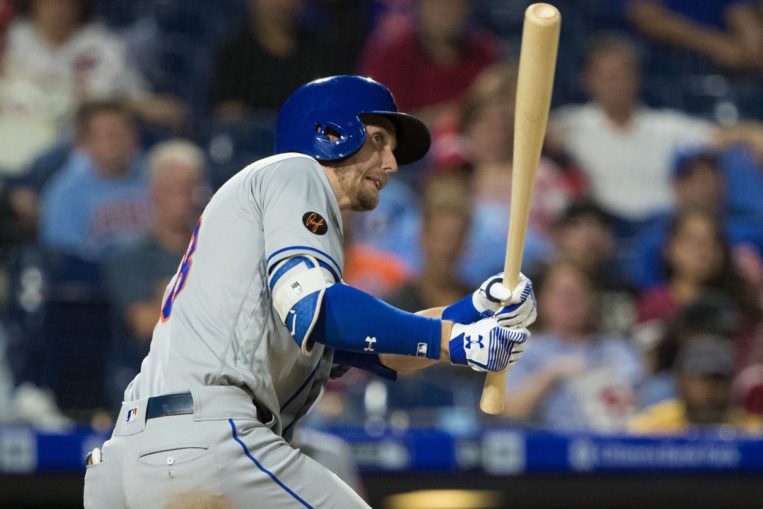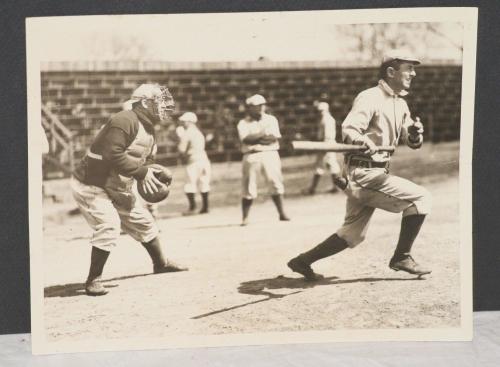|
As a rabid fan of only one team – in all sports – I admit I find a perverse pleasure in watching the Mets suffer with Jeff McNeil in the lineup.
This poor franchise has tried hard to marginalize him but in their drunk-stumbling-across-Queens-Boulevard-safely manner, they are stuck with him on the daily batting card. As of Saturday morning, this late bloomer was batting .363 for the wobbly Mets. They keep stocking infielders and outfielders – Jed Lowrie's fabled arrival seems to be delayed; he’s never hit .300 in his life – while McNeil keeps defying the launch-arc wisdom that the stat wizards in the back room have foisted on managers and players. The Mets showed a glimmer of hope early in the season when some of the hitters seemed to be listening to the old-school batting coach, Chili Davis, who told them it was really physically possible to flick the bat and make contact with the ball and put it where the fielders ain't (homage to Wee Willie Keeler. Look him up, kids.) Lately the lads have been locked into their launch-arc stroke but McNeil keeps putting the ball in play in Wee-Willie territory. The other day, Howie Rose, the Queens boy who has been calling games on the radio for centuries now, was rhapsodizing about McNeil, saying – on the air! – that McNeil is a “throwback” who is more of a credit to the real game than the launch-arc flailers. Good on Howie. McNeil took a long time to make it through the Mets’ farm system. That happens. But when a guy hits .329 in 63 games in 2018, does he have to be treated like a supersub deep into the new season? Not only that, but my friend Jerry, who played second base in the minors, tells me that McNeil was quite fine at second base late last season. Then the Mets got Robinson Cano, after his juiced-up years. Maybe the Mets are still evolving under the strange combination of Brodie Van Wagonen, the reforming agent learning the general manager business, and Mickey Callaway, who comes off in New York as The New Art Howe. (I miss Terry Collins.) Bear in mind, I am not around the team, don’t know the people or the gossip, but I watch and listen to a lot of Mets games and occasionally look at the web or read the tabloids so I can find the daily news on the Mets. This is essentially a fan’s rant. Keep slapping the ball where they ain’t, Jeff McNeil.
bruce
5/10/2019 11:30:34 am
george,
George Vecsey
5/10/2019 05:38:19 pm
Bruce, I rooted for the Dodgers from afar...When the Mets were formed, it was a kick to have the Dodgers and Giants coming to town, but also the Cardinals and Pirates and Reds, the grand old river National League towns.
bruce
5/10/2019 05:44:20 pm
george
Josh Rubin
5/10/2019 11:32:00 am
Yes, I agree with everything you said. McNeil is the first bona fide (potential) .300+ hitter the Mets have had since (you know what I'm going to say) Murphy. Even with a bunch of .255 hitters who swing for the fences, someone has to get on base before he can be driven home.
George Vecsey
5/10/2019 05:42:52 pm
Josh: Players are not encouraged to think about getting on base. Salaries and playing time are based on home runs. They strike out, they shrug and go back to the dugout. No sense that they could have made contact with 2 strikes. Teams endorse it....Don't blame ESPN highlights., It's the"baseball people" making real scouts irrelevant.
Roy Edelsack
5/11/2019 05:01:39 pm
My attorney grew up in Queens with Howie Rose and he told me the young Howie used to do play-by-play of their punch ball games.
George
5/11/2019 06:27:14 pm
Roy: wonderful. Invisible man. I had forgotten.
Edwin Martin
5/12/2019 03:35:04 pm
Old guy memories. We played dirt court, basketball every day, and often “broadcast” the game ala Marty Glickman, “especially, Good! Like Nedick’s.” Comments are closed.
|
Categories
All
|











